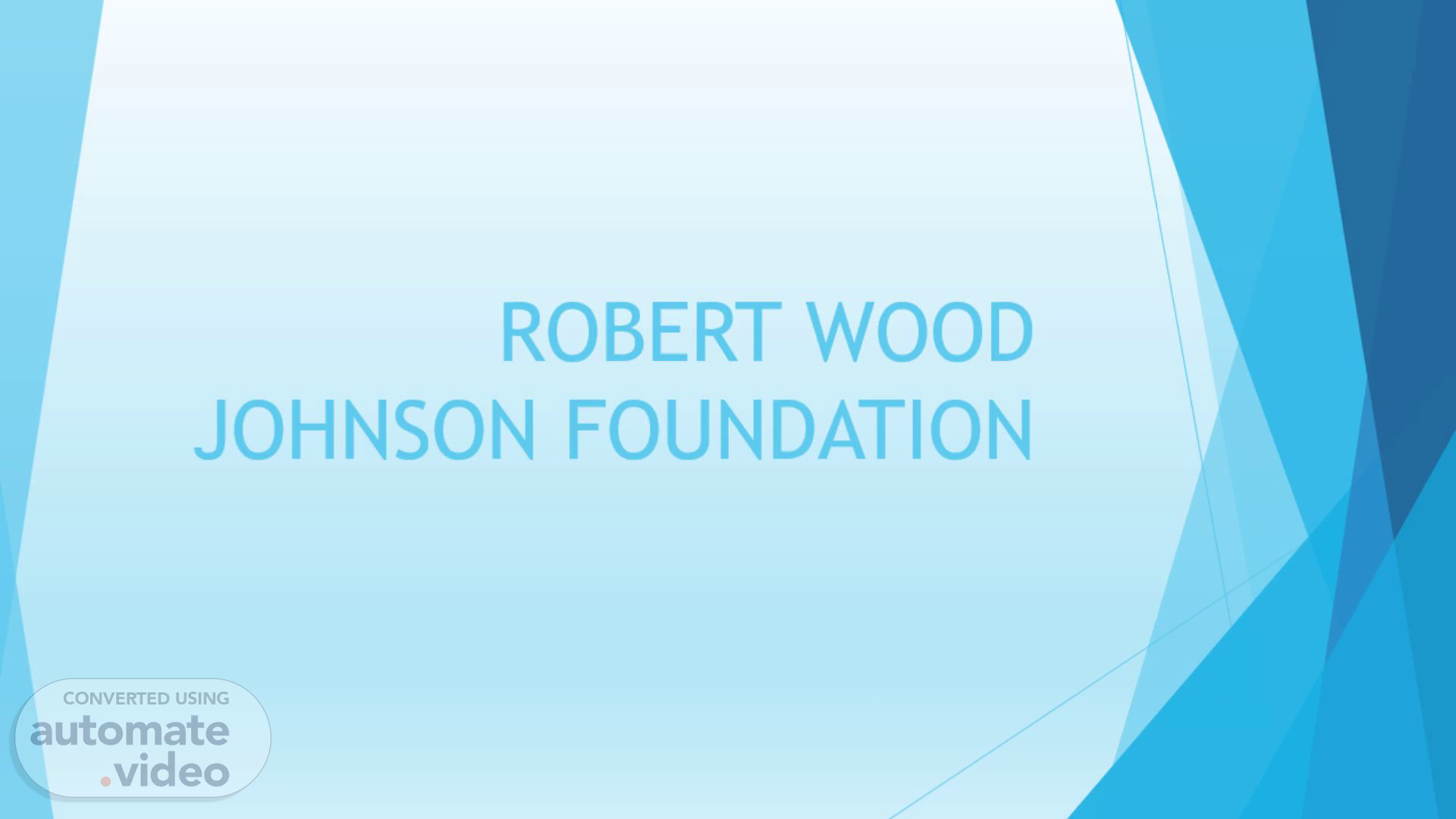
ROBERT WOOD JOHNSON FOUNDATION
Scene 1 (0s)
[Audio] Hello everyone this is group four and our presentation is based on R-W-J-F as our charity organization and Restorative philanthropy our philanthropy of giving. In this presentation we will look at how R-W-J-F aligns with restorative philanthropy RWJF and cultural diversity and lastly the relationship between R-W-J-F and different liberal arts interdisciplinary perspectives..
Scene 2 (5s)
[Audio] Restorative philanthropy aims at correcting social injustice by empowering marginalized communities. This is achieved through equal distribution of resources prioritizing immediate relief and dismantling oppressive structures..
Scene 3 (20s)
[Audio] Unlike other philanthropy of giving restorative philanthropy does not stigmatize overhead. It supports adequate funding as a tool for ensuring sustainability and effectiveness. This type of philanthropy emphasizes on the need uplift the entire community in order to create a fare and a more inclusive world..
Scene 4 (36s)
[Audio] RWJF's aim at bettering the long-term health of U S citizens and that requires investment and significant overhead they make their financial statements public and are posted on their website. R-W-J-F measures success through data demonstrating the health trends of U S citizens. R-W-J-F is a foundation that strives to make every American resident's life better and healthier and is therefore a great candidate for our team project.
Scene 5 (52s)
[Audio] Social and economic backgrounds creates a rift between individuals such as social classes. Individuals from lower social classes are more susceptible to mistreatment of unequal access to public resources. Through programs such as community outreach and legislative advocacy for change RWJF solves these problems. Thus creating a healthy community rather than just a group of individuals..
Scene 6 (1m 7s)
[Audio] In their quest to create a healthier community that overlooks cultural underlying factors RWJF faces problems such as rigidity of some programs. Therefore they have been forced to create dynamic models that targets specific groups that were out of reach to ensure success. Other areas however still needs improvement even though it has registered success in some areas..
Scene 7 (1m 23s)
[Audio] Sociologists studies social relationships history and institutions and their intersection with modern life and determine how these affects people today. From sociological perspective factors such as education income and community resources plays a significant role in the creation of injustice and disparities. R-W-J-F carries out an in depth research on the communities through community outreach programs in order to ensure equality in funding and service provision..
Scene 8 (1m 39s)
[Audio] Through the study of history we are now able to understand how acquisition of health services were like before and how they are like today. Racism was rampant and it created a very big gap in health services. R-W-J-F ensures equal representation of all people especially the marginalized groups. Through creation of awareness programs R-W-J-F has ensured that there is limited racial and ethnicity considerations when accessing health care srvices..
Scene 9 (1m 54s)
[Audio] Their research and publications add useful statistical insights to public health. As Matranga and others (2021) write "The key role of statistical modeling in epidemiology and public health is unquestionable. The methods and tools of biostatistics are extensively used to understand disease development uncover the etiology and evaluate the development of new strategies of prevention and control of the disease..
Scene 10 (2m 10s)
[Audio] As stated early in this presentation Restorative philanthropy aligns well with R-W-J-F as they both emphasizes on the need to create a conducive environment for all people in the acquisition of the health care services. Also eradication of social injustice disparities and marginalization is key to creating a healthier world not only for us but also for the future generations..
Scene 11 (2m 26s)
REFERENCES. Byrd, W. M., & Clayton, L. A. (2001). Race, medicine, and health care in the United States: a historical survey. Journal of the National Medical Association, 93(3 Suppl), 11S–34S. https://www.ncbi.nlm.nih.gov/pmc/articles/PMC2593958/ Johnson, L. (2022). Challenges and Innovations in Health Philanthropy: The Case of RWJF. Journal of Health Equity, 18(2), 112-128. https://doi.org/10.1016/j.jhe.2022.03.007 Le, Vu. (2020). "Overhead Myth: Why We Need to Stop Minimizing Nonprofit Overhead Costs.“ Marmot, M. (2020). The Social Determinants of Health: The Solid Facts. World Health Organization. https://www.who.int/social_determinants/thecommission/finalreport/en/Links to an external site. Matranga, D., Bono, F., & Maniscalco, L. (2021). Statistical Advances in Epidemiology and Public Health. International journal of environmental research and public health, 18(7), 3549. https://doi.org/10.3390/ijerph18073549 National Committee for Responsive Philanthropy (NCRP). (n.d.). "Social Justice Philanthropy.“ Williams, R. (2021). Community-Based Health Interventions and Their Impact on Health Disparities. Social science & Medicine, 278, 113432. https://doi.org/10.1016/j.socscimed.2021.113432 Yearby, R., Clark B., & Figueroa, J. F. (2022). Structural Racism in Historical and Modern US Health Care Policy. Health Affairs. Vol. 41. p.187-194. https://doi.org/10.1377/hlthaff.2021.01466Links to an external site.. https://www.healthaffairs.org/doi/10.1377/hlthaff.2021.01466..